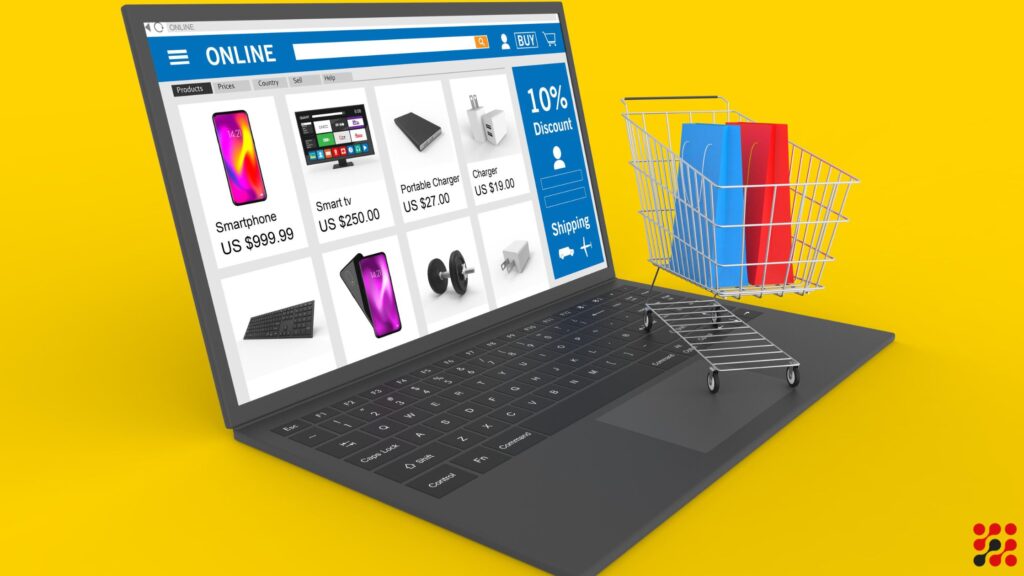What are Important Differences Between Telehealth and In-Person Care – Overview
Telehealth has brought about significant differences compared to traditional in-person care. Telehealth, which uses technology, allows patients to connect with healthcare professionals from a distance. This is quite different from in-person care, where you physically visit a healthcare facility.
One major change is that telehealth makes healthcare more accessible, especially during the COVID-19 pandemic when it’s important to keep a safe distance from others. It lets people have medical consultations from their homes, making it easier for those who live far away or have trouble getting to a healthcare facility.
Another big difference is that telehealth often offers more flexible scheduling options. This is handy for people with busy lives or those facing restrictions because of lockdowns.
The way healthcare is provided is also affected. In in-person care, you see your healthcare provider face-to-face and get immediate physical exams. With telehealth, communication is virtual, relying on talking and visual descriptions. Even though you’re not in the same place, telehealth ensures that communication is clear and allows for remote diagnostics.
These differences are crucial, especially during the COVID-19 pandemic, where telehealth has become a trendy app for providing medical care while keeping everyone safe. As technology progresses, it’s important to understand telemedicine software cost to make informed decisions about your healthcare information exchange.
11 Key Differences Between Telehealth and In-Person Care
Understanding the key differences below helps individuals make informed decisions about their healthcare preferences based on their unique needs and circumstances.
Location
Telehealth: Remote access, allowing patients to receive care from anywhere.
In-person Care: Requires physical presence at a healthcare facility.
Accessibility
Telehealth: Expands access, particularly in remote or underserved areas.
In-person Care: Accessibility depends on proximity to healthcare facilities.
Appointment Flexibility
Telehealth: Often offers more flexible scheduling options for virtual consultations.
In-person Care: Appointments are typically scheduled with physical visits in mind.
Physical Examinations
Telehealth: Relies on virtual communication, verbal descriptions, and visual assessments.
In-person Care: Allows for hands-on physical examinations during appointments.
COVID-19 Impact
Telehealth: Gained prominence as a safer alternative during the pandemic, minimizing exposure risks.
In-person Care: Faced challenges due to the need for physical distancing and safety precautions.
Patient-Provider Interaction
Telehealth: Emphasizes clear communication, building a different mode of interaction.
In-person Care: Involves face-to-face communication and immediate physical examinations.
Travel Requirements
Telehealth: Eliminates the need for travel, offering convenience and reducing transportation barriers.
In-person Care: Requires travel to healthcare facilities, which may be challenging for some patients.
Diagnostic Approach
Telehealth: Relies on remote diagnostics and virtual assessments.
In-person Care: Allows for on-site diagnostic tests and immediate physical evaluations.
Continuity of Care
Telehealth: Facilitates continuous care, especially for follow-up appointments and chronic condition management.
In-person Care: Traditionally relies on in-person visits for follow-ups and ongoing care.
Technology Dependence
Telehealth: Dependent on technology platforms for virtual consultations.
In-person Care: Primarily involves traditional face-to-face interactions without extensive reliance on technology.
Healthcare Costs
Telehealth: Can be a cost-effective alternative, reducing travel costs and potentially lowering overall healthcare expenses.
In-person Care: May involve higher costs related to travel, facility fees, and in-person services.
What Are the Advantages of In-Person Care for Patients?
Immediate Diagnostics
Healthcare professionals can conduct on-site diagnostic tests and assessments promptly, leading to quicker identification of health issues.
Procedures and Treatments
In-person care facilitates the administration of hands-on procedures, treatments, and medical interventions that may require immediate attention.
Emergency Response
For urgent or emergencies, in-person care ensures rapid access to medical assistance and immediate response to critical health conditions.
Hands-On Care for Certain Conditions
Certain medical conditions require physical examination and hands-on care, making in-person visits essential for effective treatment.
Medical Equipment Utilization
In-person care allows healthcare providers to utilize on-site medical equipment for diagnostics, ensuring comprehensive and accurate assessments.
Direct Observation
Healthcare professionals can directly observe patients’ physical conditions, behaviors, and symptoms, aiding in accurate diagnosis and treatment planning.
Establishing Trust
The face-to-face nature of in-person care helps build trust between patients and healthcare professionals, contributing to a positive patient-provider relationship.
What Are The Cons of In-Person Care for Patients?
Geographical Barriers
In-person care can be challenging for individuals in remote or underserved areas, imposing geographical barriers and limiting access to healthcare.
Travel Burden
Patients often need to travel to healthcare facilities, leading to transportation costs, time constraints, and potential inconveniences, especially for those with mobility issues.
Waiting Times
In-person care may involve extended waiting times at healthcare facilities, causing frustration and reducing patient satisfaction.
Exposure to Infections
Patients attending physical appointments face the risk of exposure to infectious diseases, particularly in crowded waiting areas or during outbreaks.
Limited Scheduling Flexibility
In-person visits typically follow fixed scheduling, offering less flexibility for individuals with busy lifestyles or those facing unexpected events.
Emergency Access Challenges
In emergencies, reaching healthcare facilities promptly may be challenging, leading to delays in critical care.
Resource Allocation
Physical appointments require the allocation of resources such as medical staff, facilities, and equipment, which may lead to increased healthcare costs.
Potential for Missed Appointments
Patients may miss appointments due to various reasons, impacting continuity of care and potentially resulting in delayed diagnosis or treatment.
Stigma or Embarrassment
Certain health conditions may carry social stigma, making patients hesitant to seek in-person care due to fear of judgment or embarrassment.
Limited Access During Pandemics
During pandemics or public health crises, in-person care may face limitations due to safety concerns, reducing healthcare accessibility for certain individuals.
What Are The Benefits of Telehealth?
Remote Accessibility
Telehealth provides convenient access to healthcare services from the comfort of one’s home, overcoming geographical barriers and ensuring care for individuals in remote or underserved areas.
Flexible Scheduling
Patients benefit from flexible scheduling options, allowing them to book virtual appointments that better fit their busy lifestyles, reducing the need for rigid adherence to traditional office hours. You can integrate your telehealth with various health insurance enrollment software, health insurance software, and healthcare revenue and cycle management
Reduced Travel and Costs
Telehealth eliminates the need for travel to healthcare facilities, saving time and reducing associated costs such as transportation expenses and potential lost wages.
Minimized Exposure Risks
Particularly relevant during pandemics like COVID-19, telehealth minimizes exposure risks by enabling remote consultations, ensuring both patients and healthcare providers can maintain safety.
Continuity of Care
Telehealth supports continuous care by facilitating follow-up appointments, monitoring chronic conditions, and providing ongoing medical support without the need for frequent in-person visits.
What Are The Drawbacks of Telehealth?
Technological Barriers
Telehealth may pose challenges for individuals with limited access to technology or those unfamiliar with digital platforms, potentially creating disparities in healthcare access.
Lack of Physical Examinations
Certain medical conditions require hands-on physical examinations, which telehealth may not adequately provide, potentially impacting the accuracy of diagnosis and treatment.
Security and Privacy Concerns
Telehealth raises concerns about the security and privacy of patient information, as digital platforms may be susceptible to cyber threats or unauthorized access.
Limited Emergency Response
In emergencies, telehealth may have limitations in providing immediate hands-on interventions or responding to critical situations
Internet Connectivity Issues
Poor internet connectivity or technical glitches can disrupt telehealth sessions, leading to communication challenges.
What are Important Differences Between Telehealth and In-Person Care- How Telehealth Wins The Race?
Remote Monitoring and Management
Telemedicine allows for continuous remote monitoring of patient’s vital signs, chronic conditions, laboratory data management, and overall health status, enabling timely interventions and personalized care plans.
Timely Access to Specialists
Patients can access specialized healthcare professionals remotely, overcoming geographical barriers and reducing wait times for consultations with specialists.
Convenient Follow-Up Care
Telemedicine facilitates convenient follow-up care, allowing healthcare providers to monitor post-treatment progress and address concerns without the need for in-person visits.
Improved Chronic Disease Management
Patients with chronic conditions benefit from telemedicine’s proactive approach, receiving regular virtual check-ins, medication management, and lifestyle guidance for enhanced disease management.
Reduced Travel Burden
Telemedicine eliminates the need for patients to travel to healthcare facilities, reducing transportation costs and time constraints, especially beneficial for those in remote or underserved areas.
Enhanced Continuity of Care
Telemedicine promotes smooth communication between healthcare providers, ensuring that patients receive consistent and coordinated care across different stages of their healthcare journey.
Increased Accessibility During Pandemics
In situations like pandemics, telemedicine becomes a crucial tool for providing medical care while minimizing exposure risks, ensuring patients can access quality care without compromising safety.
How Healthcare Professionals Maintain a Balance Between Telehealth and In-Person Care – 9 Tips & Tricks
Striking a balance between telehealth and in-person care becomes essential for professionals to provide comprehensive and patient-centric services. Here are 9 tips on how healthcare professionals can maintain this equilibrium:
Individualized Patient Assessments
Custom approach based on individual patient needs, leveraging telehealth for routine check-ins and minor concerns, while reserving in-person visits for more complex assessments requiring physical examinations.
Strategic Appointment Scheduling
Implement strategic scheduling, reserving in-person appointments for cases demanding hands-on care and utilizing telehealth for routine follow-ups, medication management, and non-urgent consultations.
Communication
Communicate the availability of both telehealth and in-person options to patients and vets, so they understand when each modality is appropriate and aligns with their healthcare needs.
Technological Proficiency
Equip healthcare professionals with adequate training and resources for efficient use of telehealth technology.
Patient Education
Educate patients on the benefits of telehealth and in-person care, empowering them to actively participate in decision-making regarding the most suitable mode of healthcare delivery.
Consistent Monitoring and Follow-Up
Utilize telehealth for continuous monitoring and follow-up, allowing for proactive management of chronic conditions and reducing the frequency of in-person visits without compromising quality of care.
Emergency Protocols
Develop clear protocols for emergencies, when urgent interventions or physical examinations are required.
Workflow Integration
Integrate telehealth into existing workflows such as LIMS, allowing healthcare professionals to resume consultations without disruptions.
Patient Preference Consideration
Respect and consider patient preferences, seeking input on their comfort with telehealth or in-person visits, and incorporating these preferences into the care plan whenever feasible.
What are Important Differences Between Telehealth and In Person Care – Conclusion
In summary, knowing the key distinctions between telehealth and in-person care is vital. While in-person care involves hands-on exams, telehealth offers remote access and flexibility. Balancing both approaches allows healthcare professionals to provide comprehensive services.
This adaptable system will improve accessibility and safety for patients in different healthcare situations.
What are Important Differences Between Telehealth and In-Person Care – FAQs
When might telehealth be preferred over an in-person medical visit in 2024 and why?
Telehealth may be preferred for routine check-ups, follow-ups, and minor concerns, offering convenience, reduced travel, and timely access. In-person visits are typically favored for complex assessments requiring physical examinations and urgent care situations.
What is TeleHealth for Patients?
Telehealth for patients refers to the use of technology to access healthcare services remotely. It enables individuals to consult with healthcare professionals, receive medical advice, and participate in virtual appointments without the need for physical visits to healthcare facilities.
Patients can connect with their healthcare providers through video calls, phone calls, or online messaging platforms, facilitating convenient and timely access to medical care.
Telehealth empowers patients by overcoming geographical barriers, providing access to healthcare in remote areas, and offering a safer alternative during situations such as the COVID-19 pandemic.
This digital approach enhances accessibility, allowing patients to discuss health concerns, receive prescriptions, and manage chronic conditions from the comfort of their homes, ultimately promoting a more patient-centric and flexible healthcare experience.
What is In-Person Care for Patients?
In-person care for patients involves traditional face-to-face interactions with healthcare providers at physical medical facilities. This conventional model requires patients to visit hospitals, clinics, or doctor’s offices to receive medical attention, diagnosis, and treatment.
In-person care allows for hands-on physical examinations, immediate diagnostics, and direct communication between patients and healthcare professionals.
This approach is characterized by the personal connection established during in-office visits, enabling healthcare providers to conduct thorough assessments, perform procedures, and administer treatments in a hands-on manner.
While in-person care has been the standard for healthcare delivery, the emergence of alternative models, such as telehealth, has prompted a reevaluation of traditional in-person care.
When is in-person care preferable to telehealth?
In-person care is preferred for complex assessments requiring physical examinations, urgent care situations, and hands-on treatments that cannot be facilitated through remote consultations.







